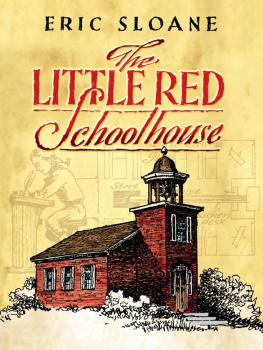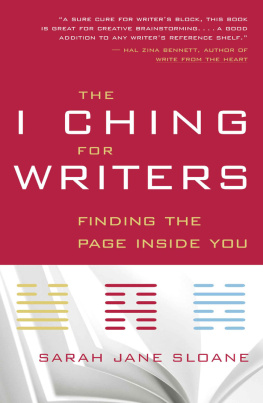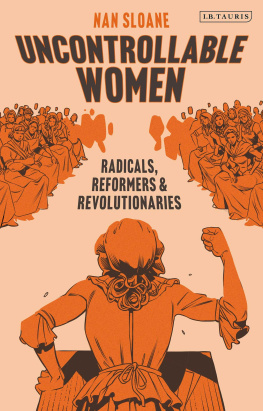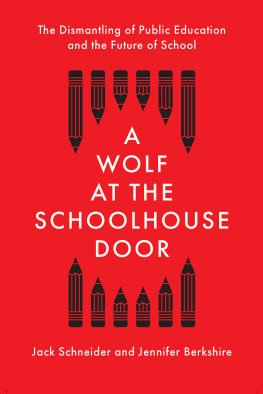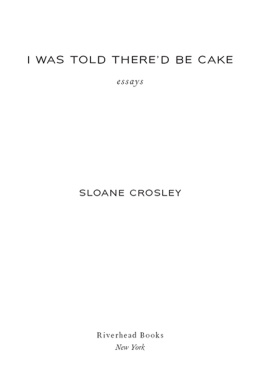Copyright
Copyright 1972 by Eric Sloane All rights reserved.
Bibliographical Note
This Dover edition, first published in 2007, is an unabridged republication of the work originally published in 1972 by Doubleday and Company, Inc., Garden City, New York.
International Standard Book Number
9780486139258
ISBN-10: 0-486-45604-8
Manufactured in the United States of America
Dover Publications, Inc., 31 East 2nd Street, Mineola, N.Y. 11501
Authors Note
The difference between yesterdays schoolhouse and that of today might seem to be merely the difference between two kinds of architecture and the difference of size. The real difference, however, is the simple difference between yesterday and today, and the way we live it. Education, like modern everyday life, has suddenly become regarded as a means of making more money. Startling as it sounds, lifes values have become all too linked with the dollar, and the diploma is openly regarded as a guaranteed bank account. School days, like our everydays, have changed.
Living has lost tranquilitywars have become almost constant, strikes are part of daily work and rebellion is a popular school study. Normal education in this modern chaotic time often resembles a child trying to do homework while parents quarrel: students feel called upon to leave their orderly routine of study and try to patch up the confusion.
In a sense, this book is a ghost story of a less-troubled past. Dead and gone is that obsolete world of the early American one-room schoolhouse, yet it still haunts those who are old enough to recall it. There seems to be an ever-lingering spirit in most ancient places of learning, somewhat like that divine spirit that sets the solemn and proper mood in an old-time church.
Not long ago as I contemplated putting my sketches and notes about early schoolhouses into book form, I walked to the tiny red-brick schoolhouse a mile from my studio in Warren, Connecticut. The door was open and I went inside. The place has been renovated many times during the last century I suppose, yet as I sat at one of the little desks I sensed a heavy yet not unpleasant presence of the past. The room had not been used since the lives and deaths of countless scholars, yet there was an unexplainable feeling that children had just left and would soon return. An aura of yesterday lingered there.
As my hand felt the surface of the initialed desk, there was an urge to carve my own initials there. I noticed a tiny tattoo-like spot under the skin on the back of my hand, the result of having tested the sharpness of an inked pen on my very first day of school. That was sixty years ago, but all of a sudden I recalled the incident clearly.
In my day, I remembered, most schoolboys carried pocketknives which were called penknives. Later I learned that these penknives were originally used for making quill pens and that they were a necessary part of early American school equipment. Which seems to explain why the old desks were so carved with knifed initials. This desk was an almost solid pattern of bygone thoughts. One gem simply said, Mary is a pip, and Ill bet she was! Another scratched note said, Last day of school... 1846.
Historic shrines evoke nostalgia, but the old-time schoolhouse has a most particular ability to parade childhood memories, and I decided it was worth a book.
It seems worthwhile reviving any kind of spirit at all in this modern world so starved for lore and lacking in individual spirit: classrooms now have become more like business offices than halls of learning. Perhaps, I thought, the ghosts of yesterdays little red schoolhouse might be welcome companions. When Emerson said, Only spirit can teach, he meant there must be an inner spirit (inspiration) for proper teaching and learning. Those old one-room schoolhouses were certainly overflowing with that.
The introduction to schooling is always a delicate, poignant and memorable performance for it is also the introduction to adulthood. In his autobiography, William Allen White recalled his first day of school. What a day! he wrote. Ma started to take me but Pa objected. He always objected when she coddled me. Of course I like to be coddled, and I sided with her; but Pa had his way. The compromise was that he said, Ill take him. And so we started out. Ma was in the doorway and I left her full of tears, for she knew, having taught school, that I would never come back her baby. She knew that I was gone out of her life as a child and would return that noon a middle-aged person, out in the world for good and all.
Pa took me two blocks on my way to the schoolhouse, still three blocks away, and when he was out of sight of Ma in the doorway, he prodded me with his cane in pride and affection and said, Now, Willie, you are a man. Go to school! and he turned and left me. He could not bear the shame of bringing me into the school-room, shame for him and shame for me, and we both knew it. And I trudged on.
As I sat at a desk of the Warren red-brick schoolhouse and closed my eyes, I tried to recall my own first school days. It was more difficult to remember the actual classrooms than it was to feel again the way I thought and the fresh experiences of youth. The only recollection of my first classroom was a painted motto that was framed and hung over the teachers desk. It read: WHAT YOU ARE TO BE, YOU ARE NOW BECOMING. Half a century later those thought-provoking words continue to affect me.
Red Brick Schoolhouse 1784 at Warren, Connecticut
I suppose there are still a few one-room schoolhouses in the remote stretches of Americas West and Southwest. I recall (while working in the wheat fields as a boy) going to the end-of-the-term box-lunch and spelling bee of such a school in the Oklahoma Panhandle. Ladies brought boxes of food that were auctioned off to anxious dining partners, and the proceeds went to pay the salary of the schools bus driver. Children usually rode a pony or horse out to the highway, tethered the animal and then picked up the bus the rest of the way to school.
I remembered the spelling bee for grown-ups and how most parents hid or were embarrassed at not being able to spell simple words: one old cowpoke was caught sneaking out on his hands and knees, his rifle held in one hand, clanking over the floorboards. He was pulled back into the competition, but in the middle of the performance, word came about a break in a barbwire cattle fence. It broke up the adult spelling bee, and most of the male participants were glad to leave what they considered an ordeal.





